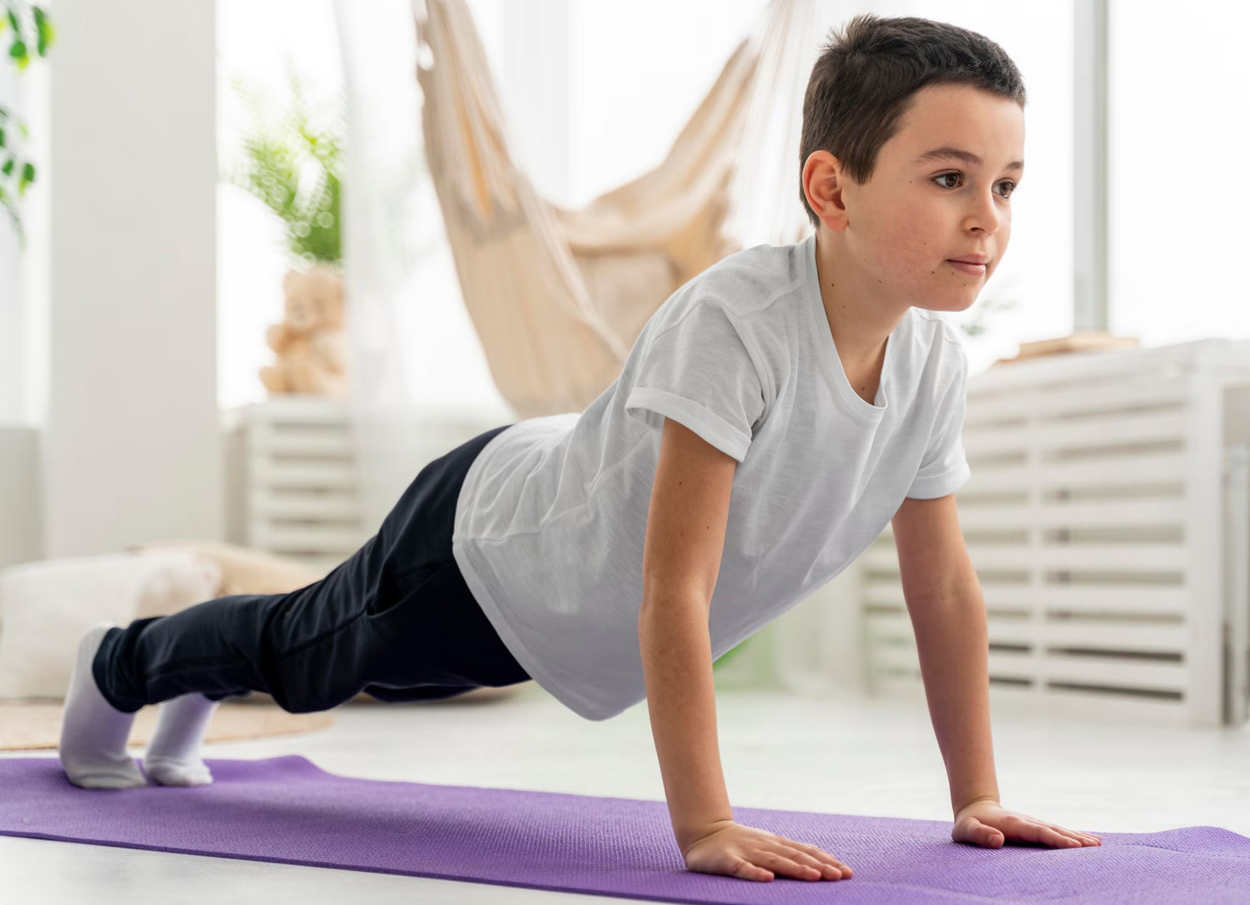Everyday household objects can be used to turn simple routines into playful sessions that boost a child’s motor skills and body awareness. Families looking for easy ways to support healthy growth can try practical activities at home without the need for special equipment.
Integrating balance exercises for kids into daily routines does not just promote the physical strength of your child, it also encourages focus and concentration. Many of these activities feel like games, helping children stay motivated and engaged while improving their sense of balance and movement control.
The content provided here is for informational purposes only. Always consult your healthcare provider before making any health decisions.
Key Takeaways
- Balance exercises support healthy growth and development.
- Activities are fun, easy, and can be done at home.
- These routines help improve coordination and confidence.
The Importance of Balance Exercises for Kids
Balance exercises play a vital role in a child's overall physical and mental growth. These activities support physical development, lay the foundation for motor skills, and foster improved attention and body control.
Physical Development and Coordination
Practicing balance activities helps children develop fundamental gross motor skills, such as standing, walking, and running. These skills are closely linked to improved body awareness and spatial awareness, which help kids navigate their environment confidently.
When kids engage in games that challenge their sense of balance, they learn to shift their weight and adjust their posture. This strengthens the connection between their brains and muscles, leading to more efficient movement. Improved coordination reduces the risk of falls and supports safer play. Regular balance activities also promote postural control, which impacts sitting, standing, and even daily routines like dressing and meal times. Enhancing coordination through balance games helps children gain greater independence in daily tasks.
Building Core Strength and Stability
Balance exercises require kids to engage their core muscles, including the abdominals, back, and hips. These muscles provide stability and are essential for maintaining proper posture both at rest and during movement. A strong core supports the body during movement transitions, such as stepping up stairs or jumping. Children with good core stability typically display better endurance in activities, less fatigue during play, and lower risk of strain-related injury.
Strengthening the core through balance practice promotes better alignment and stability, which contributes to safer movement. This kind of training helps children build strength in key muscle groups needed for a variety of motor skills, from running to climbing.
Enhancing Concentration and Focus
Balance activities often involve multitasking, such as maintaining a pose while listening to instructions or moving in a specific pattern. This combination of physical control and attention sharpens concentration. Engaging in balance-focused play supports self-regulation skills, as kids must control both their bodies and their impulses. This improves their ability to stay on task in both classroom and recreational settings.
Practicing balance can help develop both short-term focus, like holding a position, and long-term attention by requiring patience and persistence. Children who regularly work on balance often show improvements in behavior and academic engagement.
Fun and Easy Balance Exercises to Try at Home
Balance exercises help children build strength, coordination, and stability. These activities offer both physical and cognitive benefits and can be adapted to spaces and equipment most families have at home.
Classic Balance Activities
Classic activities include exercises children may already know, like standing on one foot or walking along a taped line on the floor. These build foundational balance skills and encourage core strengthening. A simple balance beam can be created with painter’s tape or a narrow board, challenging kids to perform a tightrope walk from one end to the other.
Static balance activities involve holding still positions, such as the tree pose from yoga, which boosts body awareness and patience. For more dynamic options, hopscotch helps kids practice both single-leg hopping and balance transitions. Balancing a book on the head is another timeless way to improve posture and stability during movement.
Creative Gross Motor Challenges
Creative challenges keep work engaging. An obstacle course using furniture, pillows, or stepping stones improves dynamic balance as kids crawl, jump, and maneuver through varying tasks. Adding a therapy ball, wobble cushion, or balance board introduces elements that require children to adjust for shifting surfaces.
Crab walking requires coordination, core strength, and hand-foot awareness. Tug of war offers a teamwork twist and tests stability through resistance. For children who like a challenge, timing how long they can keep a ball balanced on a spoon or in their hand while walking keeps things fun and focused.
Games and Interactive Balance Drills
Games add a social element and make balance exercises even more enjoyable. Freeze dance lets kids dance when music plays, freezing instantly to hold a pose when it stops, promoting both balance and mindfulness. Twister uses color and body positioning to encourage balancing acts across the mat.
“The floor is lava” transforms any room, requiring quick thinking and movements to avoid touching the floor by balancing on couches, cushions, or furniture. Partner games like mirroring each other's yoga poses or balancing acts foster teamwork and communication.
Conclusion
Incorporating balance exercises at home helps children develop better coordination, stability, and confidence. Simple activities such as standing on one foot, walking on a line, and playful challenges make fitness more accessible and enjoyable for kids.
These exercises can also strengthen muscles and encourage consistent movement without the need for special equipment. Parents who provide regular opportunities for practice often see improvements in their child’s balance and focus. Creating a playful environment supports lifelong habits that benefit overall development and well-being.















